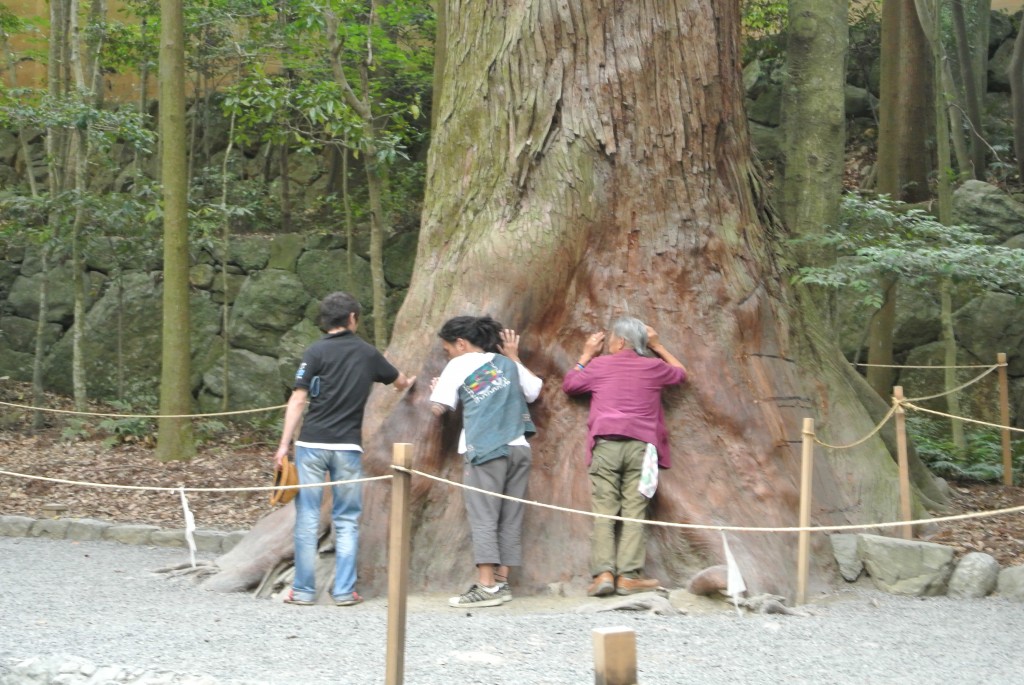
Getting in touch with the power of trees at Ise Jingu
It’s rare to find a Shinto shrine without a sacred tree. Indeed, the origins of shrines may well have started with trees, and their symbolic nature may permeate the human consciousness… Deeply rooted below the earth and rising up to the skies, they span the three worlds of shamanism and there’s a very real reason why The Tree of Life came to dominate spiritual thought in ancient times.
‘Why is it that when we behold the oldest living trees in the world, primeval awe runs down our spine? We are entwined with trees in an elemental embrace, both biological and symbolic, depending on them for the very air we breathe as well as for our deepest metaphors, millennia in the making. They permeate our mythology and our understanding of evolution. They enchant our greatest poets and rivet our greatest scientists. Even our language reflects that relationship – it’s an idea that has taken “root” in nearly every “branch” of knowledge.’ – Maria Popova, writing in Brain Pickings.
**********************************************************************************************************
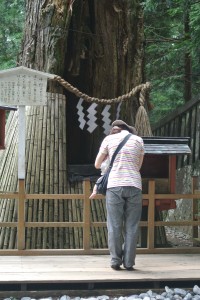 The piece below comes from the introduction to The Book of Trees by Manuel Lima:
The piece below comes from the introduction to The Book of Trees by Manuel Lima:
“In a time when more than half of the world’s population live in cities, surrounded on a daily basis by asphalt, cement, iron, and glass, it’s hard to conceive of a time when trees were of immense and tangible significance to our existence. But for thousands and thousands of years, trees have provided us with not only shelter, protection, and food, but also seemingly limitless resources for medicine, fire, energy, weaponry, tool building, and construction. It’s only normal that human beings, observing their intricate branching schemas and the seasonal withering and revival of their foliage, would see trees as powerful images of growth, decay, and resurrection. In fact, trees have had such an immense significance to humans that there’s hardly any culture that hasn’t invested them with lofty symbolism and, in many cases, with celestial and religious power. The veneration of trees, known as dendrolatry, is tied to ideas of fertility, immortality, and rebirth and often is expressed by the axis mundi (world axis), world tree, or arbor vitae (tree of life). These motifs, common in mythology and folklore from around the globe, have held cultural and religious significance for social groups throughout history – and indeed still do.”
**********************************************
Here too is a wonderful passage by Herman Hesse (taken from Bäume: Betrachtungen und Gedichte [Trees: Reflections and Poems], originally published in 1984:
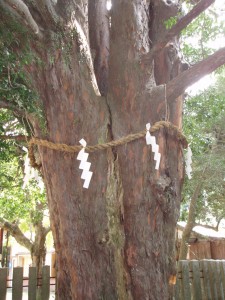
sacred tree festooned with shimenawa rope and shide paper strips
“For me, trees have always been the most penetrating preachers. I revere them when they live in tribes and families, in forests and groves. And even more I revere them when they stand alone. They are like lonely persons. Not like hermits who have stolen away out of some weakness, but like great, solitary men, like Beethoven and Nietzsche. In their highest boughs the world rustles, their roots rest in infinity; but they do not lose themselves there, they struggle with all the force of their lives for one thing only: to fulfill themselves according to their own laws, to build up their own form, to represent themselves. Nothing is holier, nothing is more exemplary than a beautiful, strong tree.
When a tree is cut down and reveals its naked death-wound to the sun, one can read its whole history in the luminous, inscribed disk of its trunk: in the rings of its years, its scars, all the struggle, all the suffering, all the sickness, all the happiness and prosperity stand truly written, the narrow years and the luxurious years, the attacks withstood, the storms endured. And every young farmboy knows that the hardest and noblest wood has the narrowest rings, that high on the mountains and in continuing danger the most indestructible, the strongest, the ideal trees grow.
Trees are sanctuaries. Whoever knows how to speak to them, whoever knows how to listen to them, can learn the truth. They do not preach learning and precepts, they preach, undeterred by particulars, the ancient law of life.
A tree says: A kernel is hidden in me, a spark, a thought, I am life from eternal life. The attempt and the risk that the eternal mother took with me is unique, unique the form and veins of my skin, unique the smallest play of leaves in my branches and the smallest scar on my bark. I was made to form and reveal the eternal in my smallest special detail.
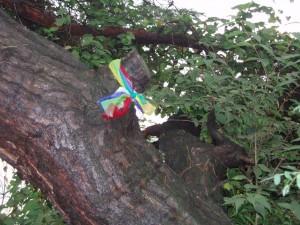
Korean shaman tree
A tree says: My strength is trust. I know nothing about my fathers, I know nothing about the thousand children that every year spring out of me. I live out the secret of my seed to the very end, and I care for nothing else. I trust that God is in me. I trust that my labor is holy. Out of this trust I live.
When we are stricken and cannot bear our lives any longer, then a tree has something to say to us: Be still! Be still! Look at me! Life is not easy, life is not difficult. Those are childish thoughts. . . . Home is neither here nor there. Home is within you, or home is nowhere at all.
A longing to wander tears my heart when I hear trees rustling in the wind at evening. If one listens to them silently for a long time, this longing reveals its kernel, its meaning. It is not so much a matter of escaping from one’s suffering, though it may seem to be so. It is a longing for home, for a memory of the mother, for new metaphors for life. It leads home. Every path leads homeward, every step is birth, every step is death, every grave is mother.
So the tree rustles in the evening, when we stand uneasy before our own childish thoughts: Trees have long thoughts, long-breathing and restful, just as they have longer lives than ours. They are wiser than we are, as long as we do not listen to them. But when we have learned how to listen to trees, then the brevity and the quickness and the childlike hastiness of our thoughts achieve an incomparable joy. Whoever has learned how to listen to trees no longer wants to be a tree. He wants to be nothing except what he is. That is home. That is happiness.”
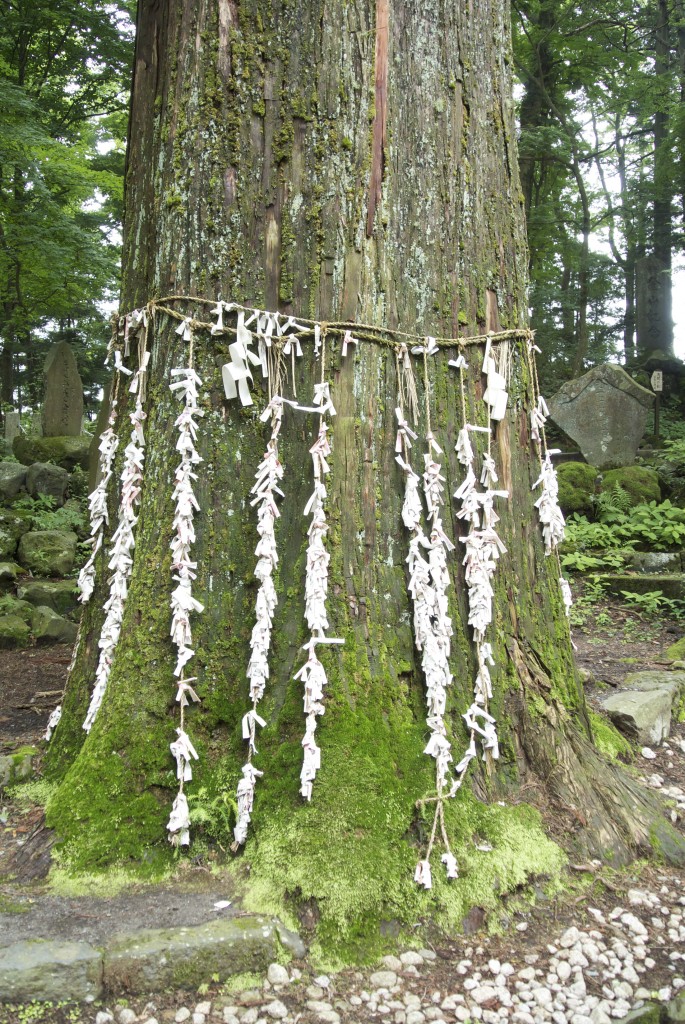
Sacred tree at Fuji Sengen Jinja
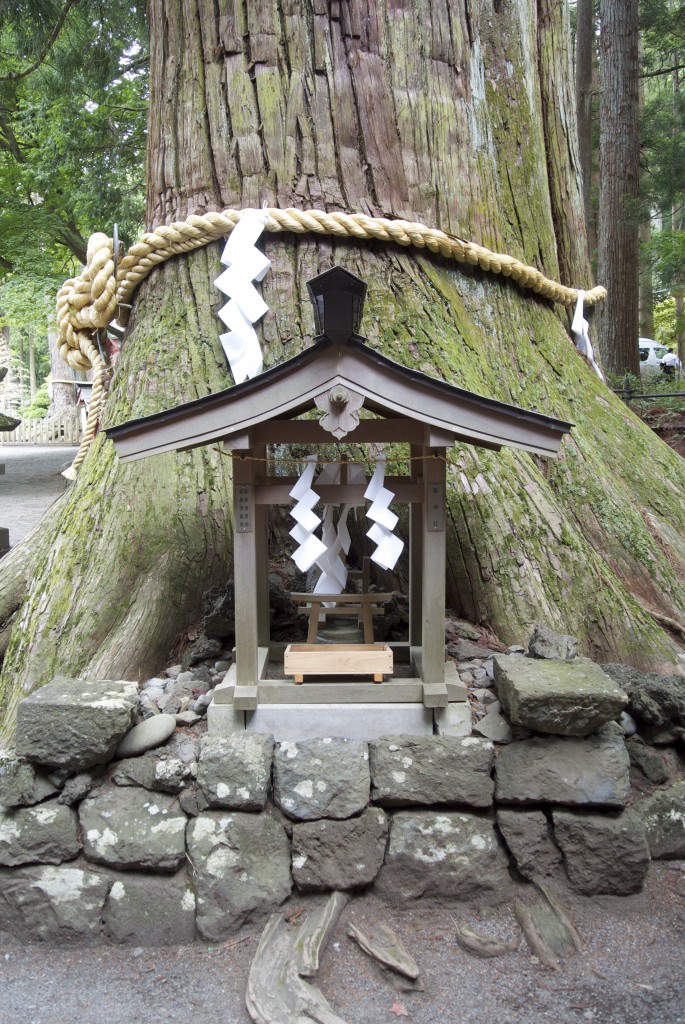
Tree shrine, captivating in its simplicity
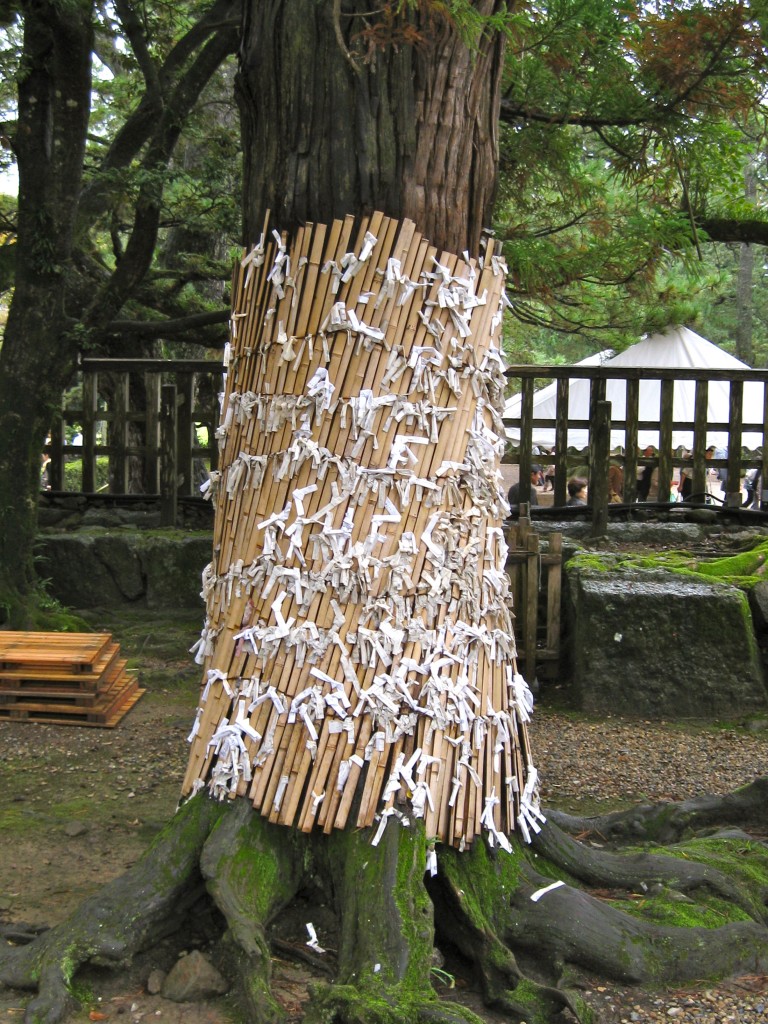
Fortune slips in a wrapped up tree
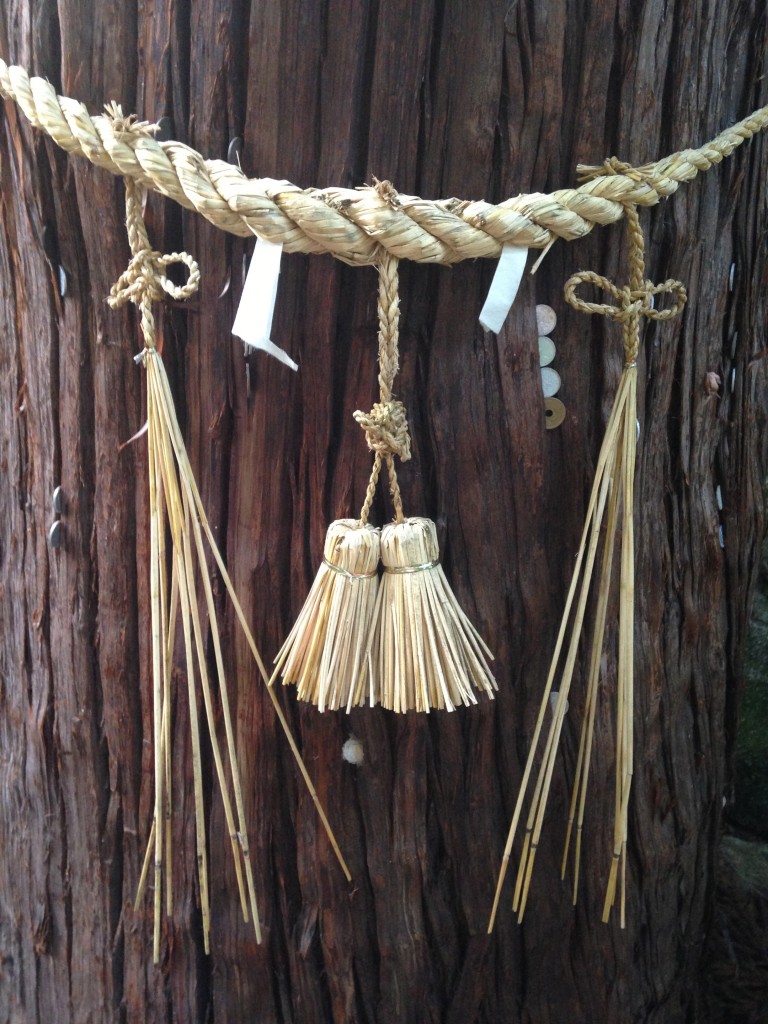
Sacred tree with rope and coin offerings for good luck

Nice piece about trees, and right on. It’s true you can tell where there will be a shrine in the country side or city, a small forest with huge camphor trees
Hi John,
I thought you might appreciate this BBC video about a Buddhist monk in Thailand who has started a movement to protect trees by ordaining them. It’s his way of teaching people that trees are sacred.
http://www.bbc.com/news/magazine-31650591
Ordaining trees and dressing them in monk’s robes – how great is that! Thanks for the link…
A fellow tree guy! Thanks for ode. I’ll keep this with me.